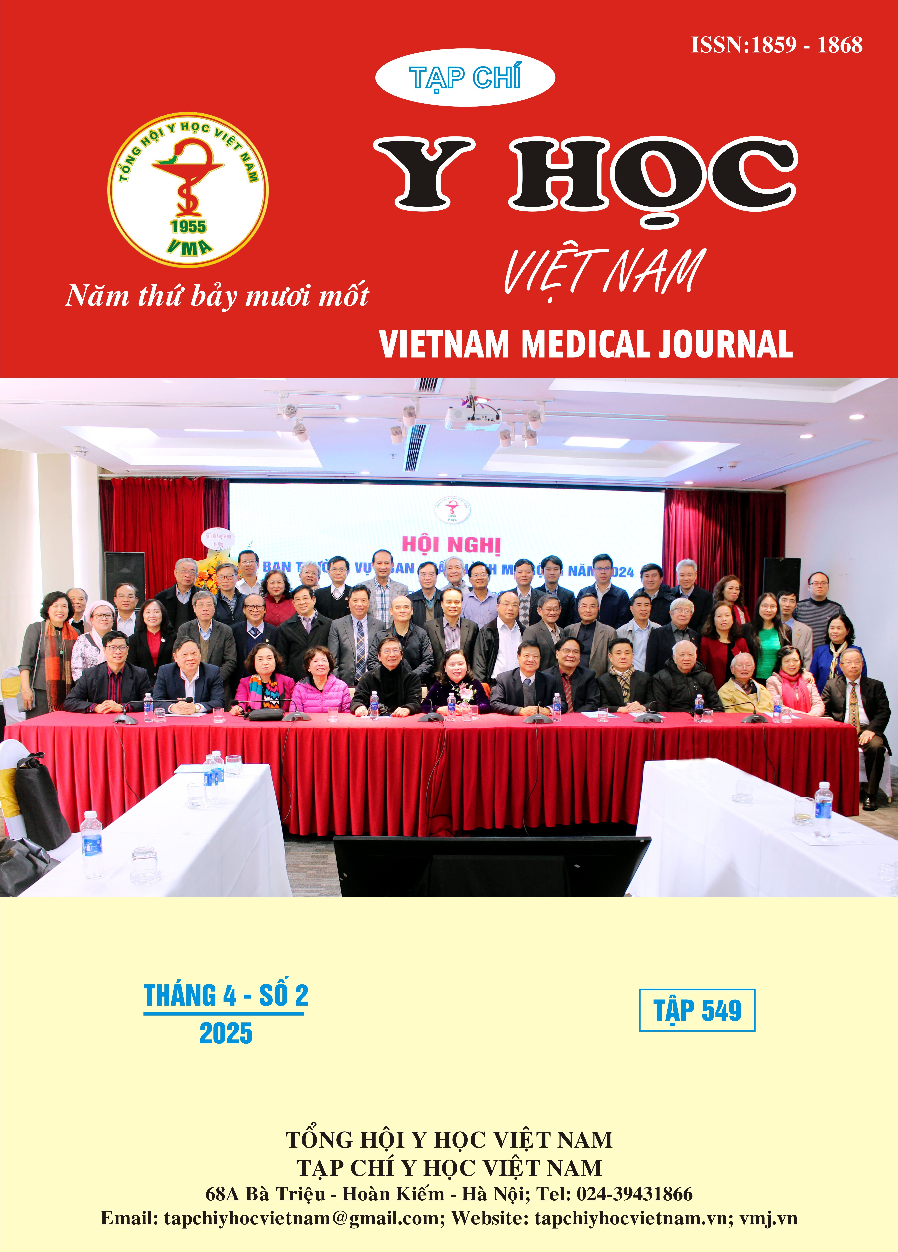THE RESULTS OF NUSS PROCEDURE WITH THREE DIMENTIOAL ENDOSCOPIC SYSTERM FOR PECTUS EXCAVATUM IN CHILDRENT
Main Article Content
Abstract
Objective: Describe the outcomes of the NUSS procedure in the treatment of pectus excavatum. Summary: Pectus excavatum (PE) is a congenital deformity caused by abnormal development of the sternum and ribs, affecting 0.6% of live births and is commonly found in males. The condition is typically detected in infancy, initially causing psychological effects due to the abnormality of the chest, and later impacting on respiratory and circulatory functions. The NUSS procedure, first described by Donald Nuss in 1986, involves using a metal bar to elevate the sternum. Since then, this technique has become popular worldwide for treating this defect. In order to assess the outcomes of this surgery, we have conducted a study. Method: Retrospective study. From January 2019 to October 2024, there were 40 patients (aged ≤ 15 years old), including 2 patients under 6 years old and 2 patients who had undergone open-heart surgery via sternotomy. Also, there were 36 patients who had symmetric pectus excavatum and 4 patients who had asymmetric pectus excavatum. The median of Haller index was 3.8, with 48% of cases being classified as severity level. Results: All patients underwent NUSS procedure with 3D endoscopic assistance. Thirty nine patients used one bar, while one patient used two bars. Mean operation time was 43 minutes and the median duration of mechanical ventilation was 40 minutes. There were no patient death. The treatment results before discharge showed that 37 patients had good results, while 3 patients had mild pectus excavatum. The average follow-up duration was 21 months. One patient required reoperation after 2 months because of the bar displacement. Four patients had their bars removed 3 years after the surgery. Conclusion: The NUSS procedure with 3D endoscopic assistance in the treatment of PE provides good results.
Article Details
Keywords
NUSS procedure, pectus excavatum, three dimentional endoscopic systerm
References
2. Nguyễn Việt Anh, Mạc Thế Trường, Phạm Hữu Lư. Kết quả điều trị lõm ngực bằng phẫu thuật Nuss cải tiến tại bệnh viện hữu nghị Việt Đức. Tạp chí phẫu thuật Tim mạch và lồng ngực Việt Nam.2018.Số 22:75-81
3. Mennie N, Frawley G, Crameri J. The effect of thoracoscopy upon the repair of pectus excavatum. Journal of pediatric surgery.2018. 53(4):740-743
4. Park HJ, Lee SY, Lee CS. The Nuss procedure for pectus excavatum: evolution of techniques and early results on 322 patients. The Annals of thoracic surgery 2004.77(1):289-295
5. Ravitch M.M. (1949), "The Operative Treatment of Pectus Excavatum". Ann Surg, 1949,129, (4), 429-44
6. Vinh VH, Khanh HQ, Binh NH, Pectus excavatum repair using bridge fixation system. Asian cardiovascular & thoracic annals, 2019. 27(5):374-380
7. Liang, H., Three-Dimensional Versus Two-Dimensional Video-Assisted Endoscopic Surgery: A Meta-analysis of Clinical Data. World J Surg, 2018. 42(11), 3658-3668
8. Trần Thanh Vỹ. Xác định độ tuổi phù hợp chỉ định phẫu thuật Nuss điều trị dị dạng lõm ngực bẩm sinh [Luận ánTiến sĩ Y học]. 2019.Trường Đại học Y Dược Thành phô Hồ Chí Minh


